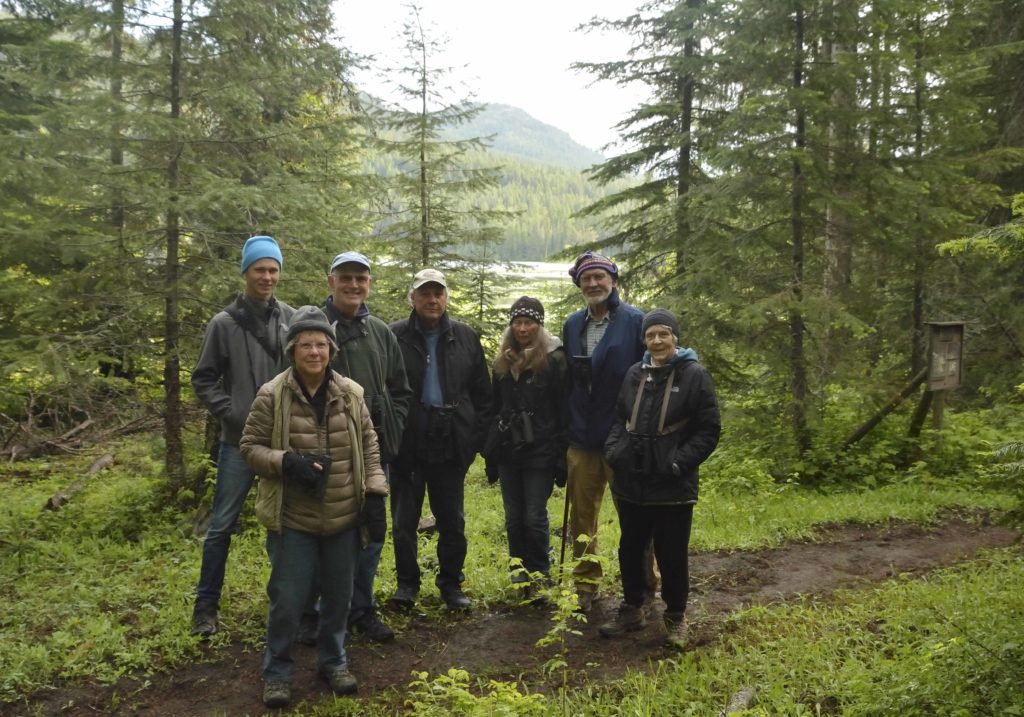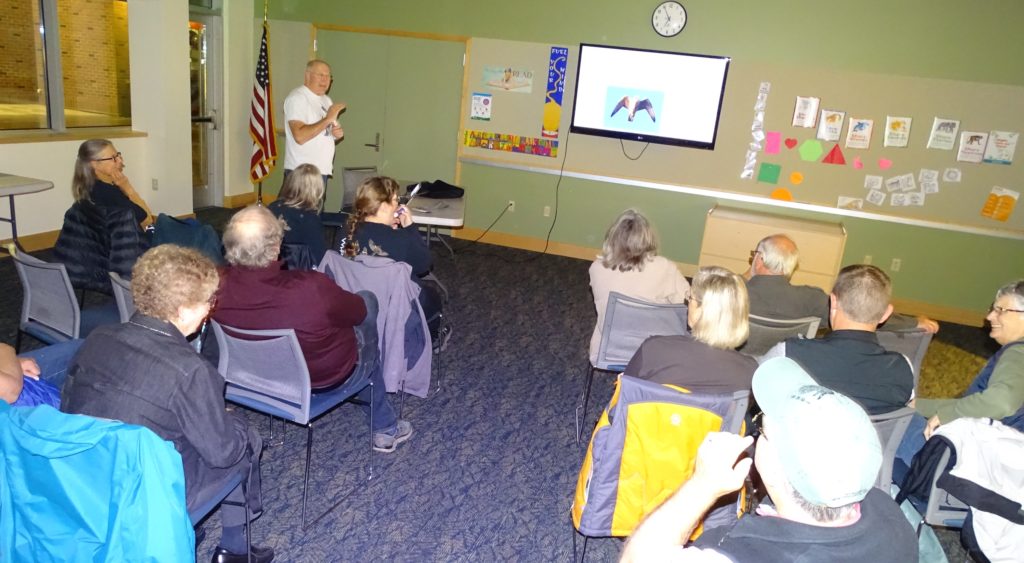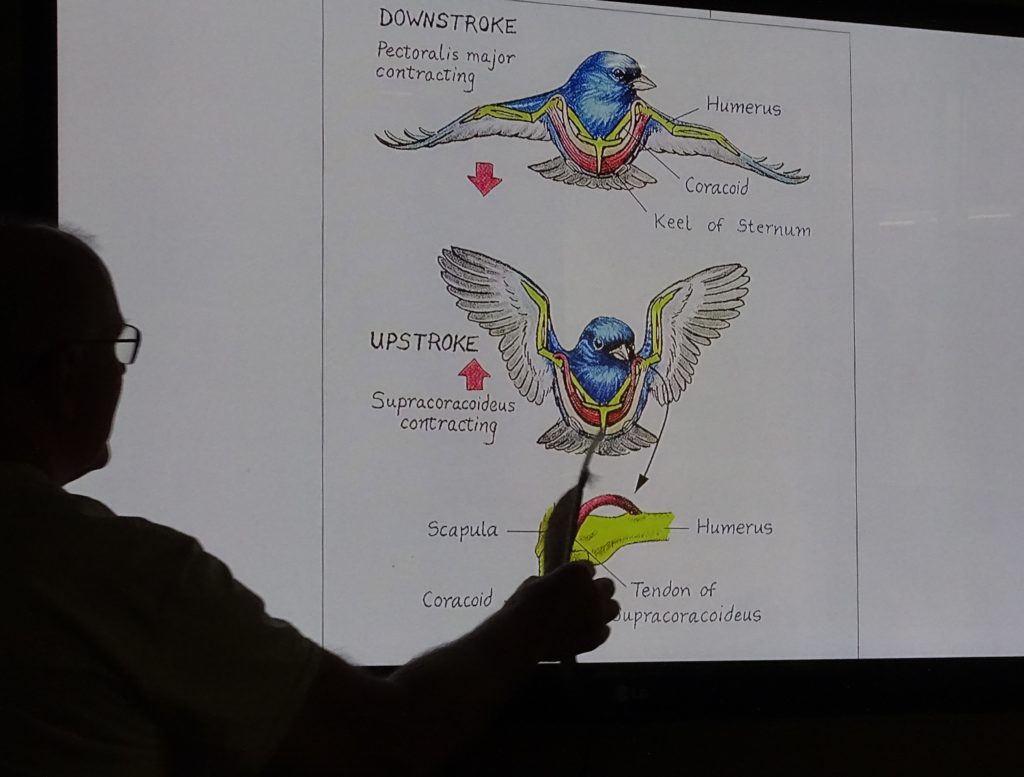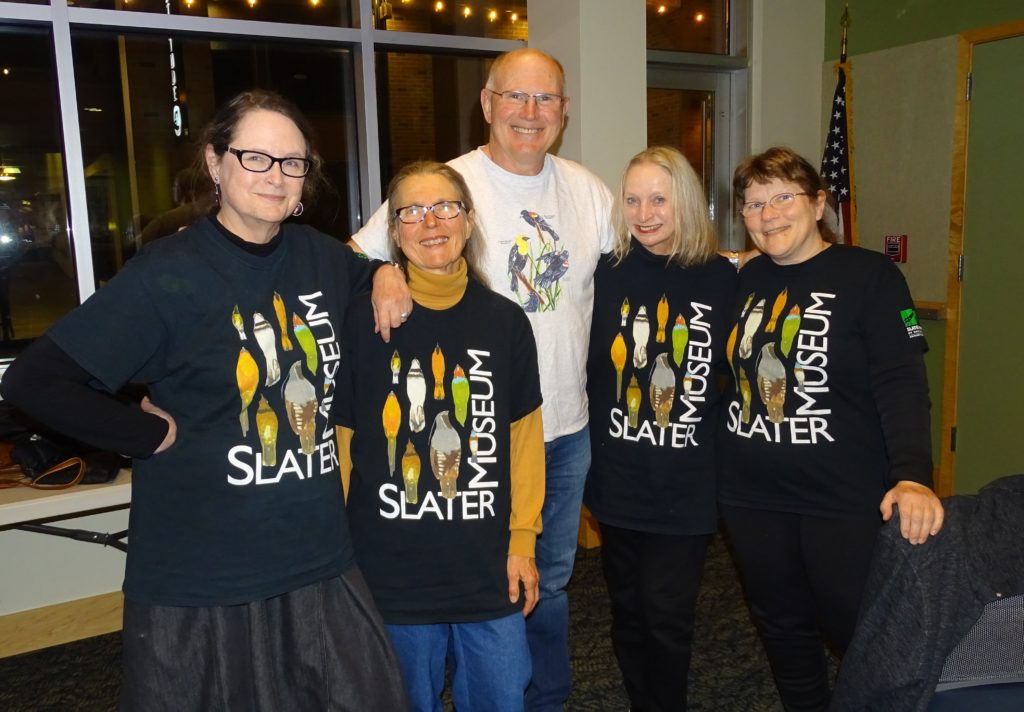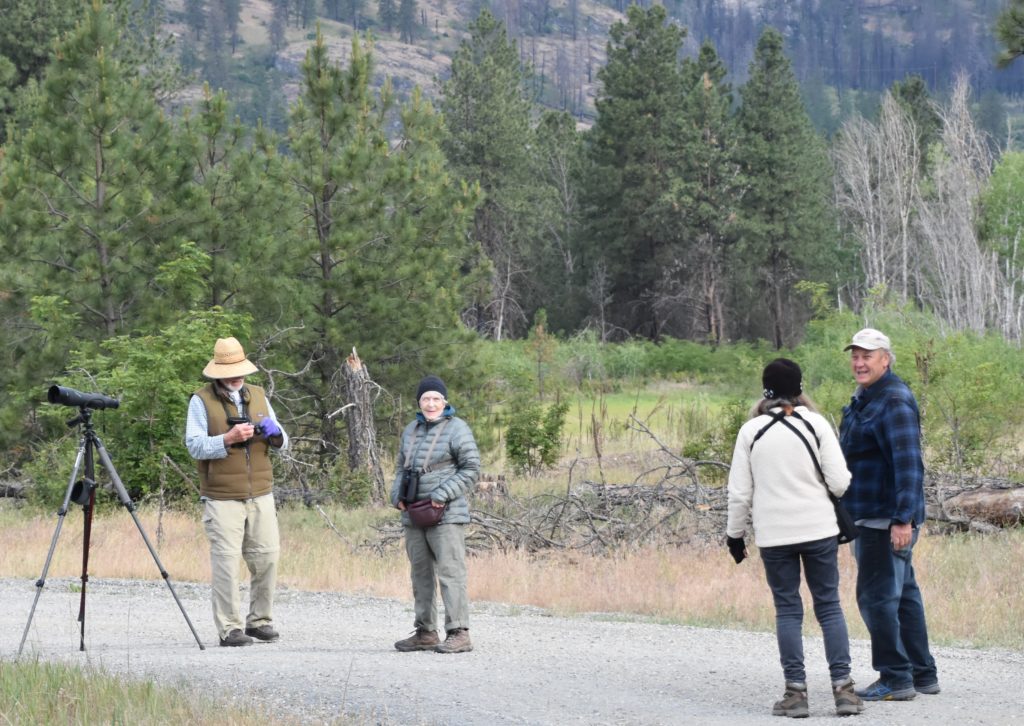
ABC had a group trip, finally. With all participants immunized and able to get away on a short-notice smaller-than-usual-group trip, 8 ABCers headed for the North East corner of the state on Tuesday June 8th. Ken put the trip together with my encouragement and the group met at the usual Travelers Rest Stop at Snoqualmie Pass at 7:30 to get out birding and try for the NE corner specialties plus a few more.
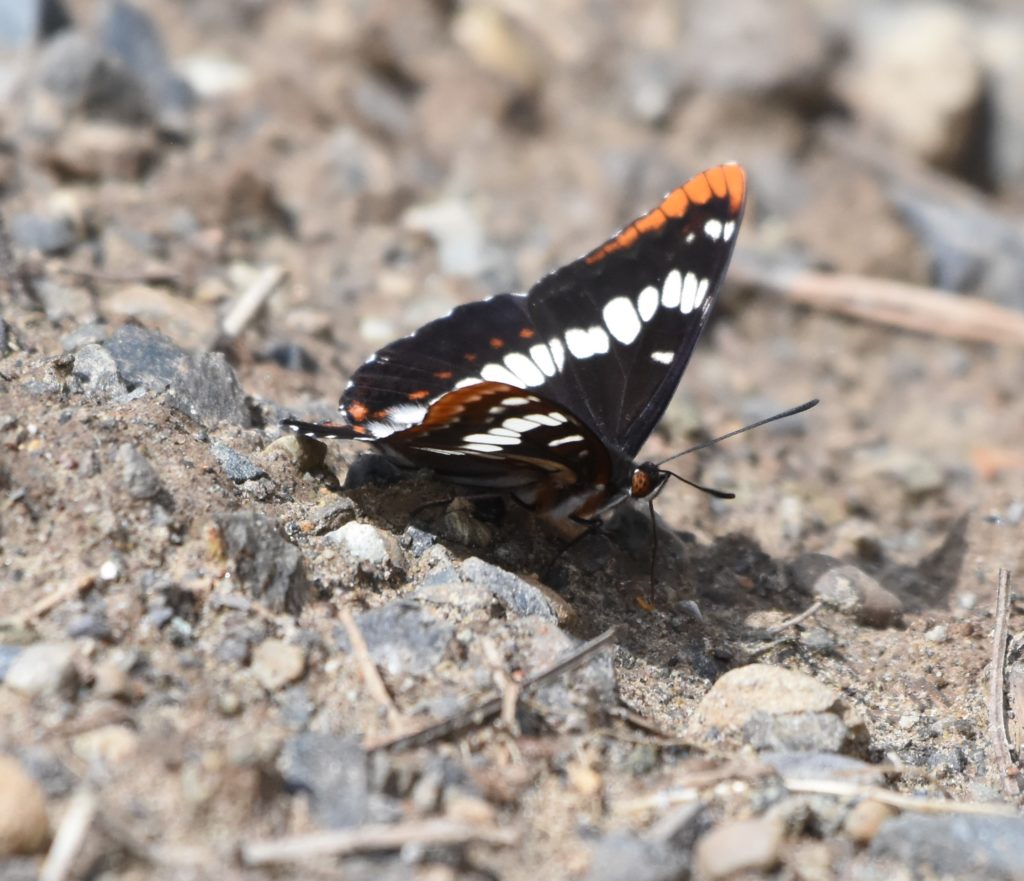
The big change in this trip was the addition of Jacob Miller, a young Mason County birder that Ken has been encouraging. He managed to break away from his family farm, Skykomish Valley Farms, and his enthusiasm as well as talented eyes and ears added lots to the trip. On the way across I-90 east we made a stop at the Ginkgo State Park Backcountry Trail spot to see the Black-throated Sparrow that had been sighted there the day prior. It was singing from prominent perches on the east side of the entry road, across from where it had been seen some years ago. This was lifer #1 for Jacob and some others, and a FOY for all but me, as the Pierce County second record bird on May 14 was a county first and FOY for me. Rock wrens were numerous there too and singing loudly.
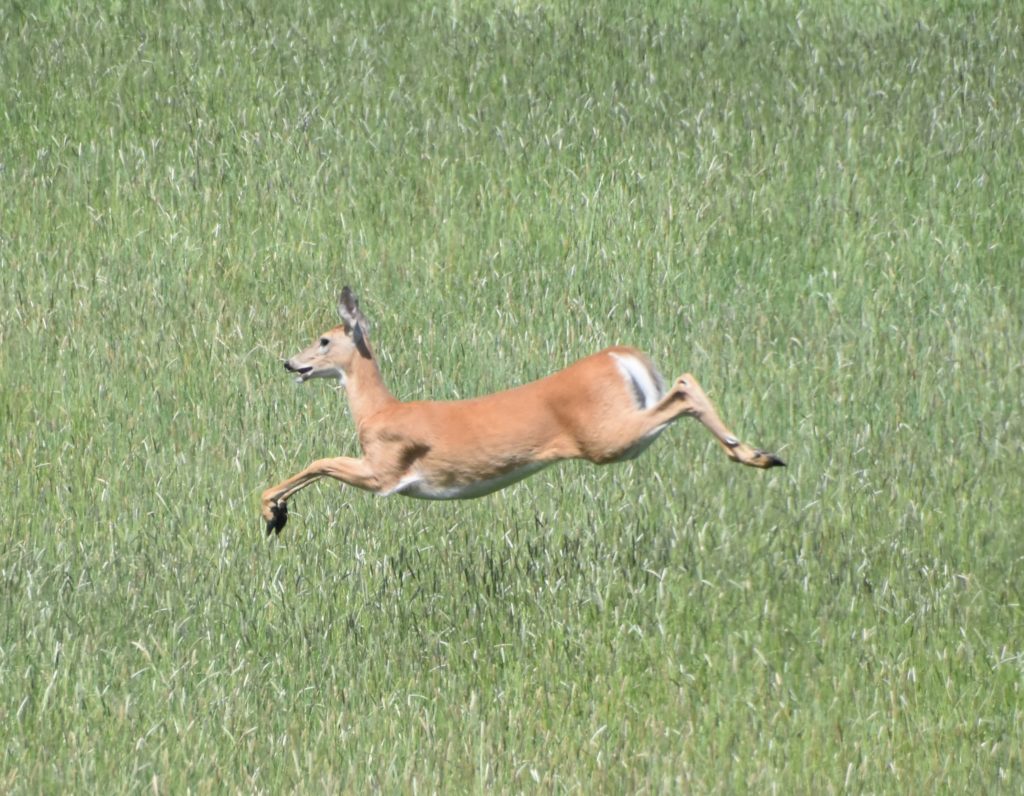
From here we spent much of the morning around Sprague Lake, in both Lincoln and Adams counties, after a quick stop at Peninsula Park at Moses Lake for Clark’s Grebe with several Forester’s Terns as an unexpected bonus and lifers #2 and #3 for Jacob. At the Lincoln County end of Sprague Lake we added Black Tern (#4) and Gray Catbird (#5) as well as Canvasback and a good variety of ducks and passerines including many Eastern Kingbirds (#6)

On the Adams County end by the boat ramp two Black-crowned Night Herons flew past (#7) and we joked that we were hitting a rut, with between 43-47 species at every stop. We made a Grasshopper Sparrow (#8) stop in grassy fields along SR -231 on the way out of Sprague, adding Vesper Sparrows along with Swainson’s Hawks there too.

Stops at Reardon Pond added our first of many Bank Swallows, and at Hafer Road in Steven’s County we managed to find a pair of Clay-colored Sparrows (#9) along with the Dusky Flycatchers (#10) before heading to dinner in Colville at a Mexican place with decent food but incredibly slow service. After a 2-hjour dinner stop we got to Cottonwood Campground just after sunset, pitching tents in the last light. Singing Veery (#11) and drumming Ruffed Grouse were nice bedtime additions.
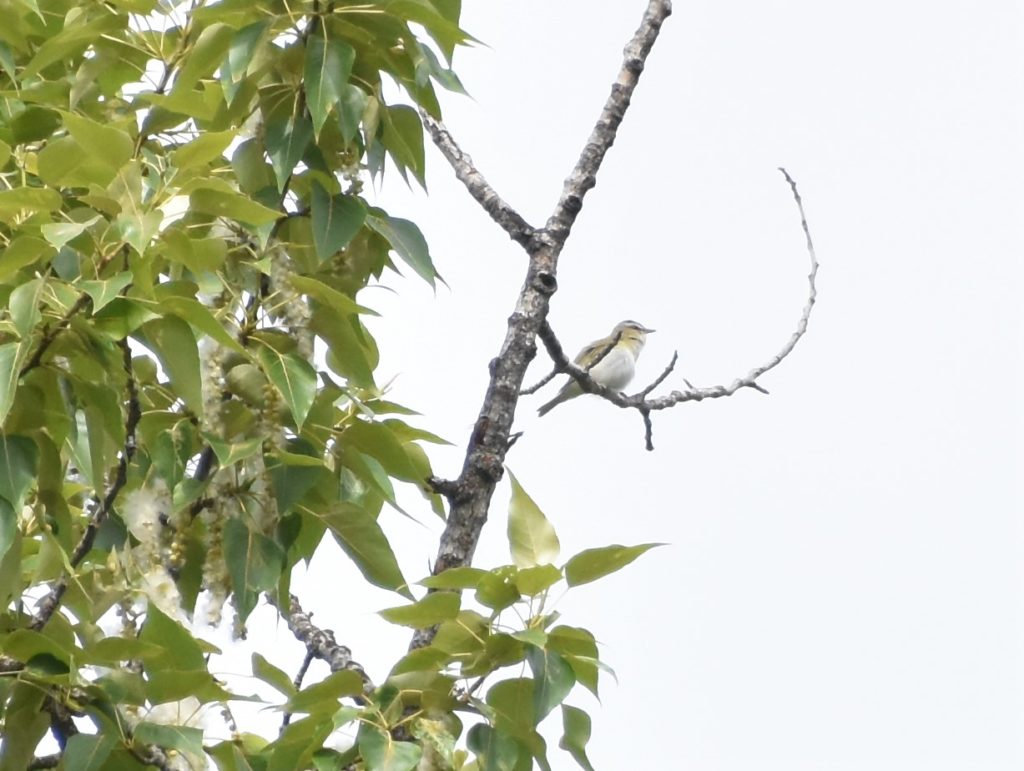
It drizzled much of the night, making for damp camping gear for the rest of the trip, but the morning birding made up for it, with a mother Ruffed Grouse keeping a close eye on us as her young hid in the roadside brush on the campground driveway. Red-eyed Vireo and American Redstart (#12-13) were easily seen in camp, as well as more calling and singing Veery, and a White-breasted Nuthatch (#14). At the HQ we got our first looks at Calliope (#15) and Black-chinned Hummingbirds (#16) and then we headed around the auto loop at Pend Oreille NWR. It was not that birdy but Nashville Warbler (#17) was found on Bear Creek Road, and at lunch at the McDowell Lake Trailhead a soaring Northern Goshawk (#18) entertained and amazed all of us while Jacob had the presence of mind to carefully look at a woodpecker that we all saw fly in front of us but didn’t look away from the Goshawk, getting White-headed Woodpecker (#19) as a “Jacob only” bird of the trip. On a hike to the lake a Golden Eagle was another trip highlight.

After leaving the NWR we birded Amazon Marsh. It was difficult, but finally we managed to get onto a singing Northern Waterthrush (#20) along with American Redstart and several more Gray Catbirds.
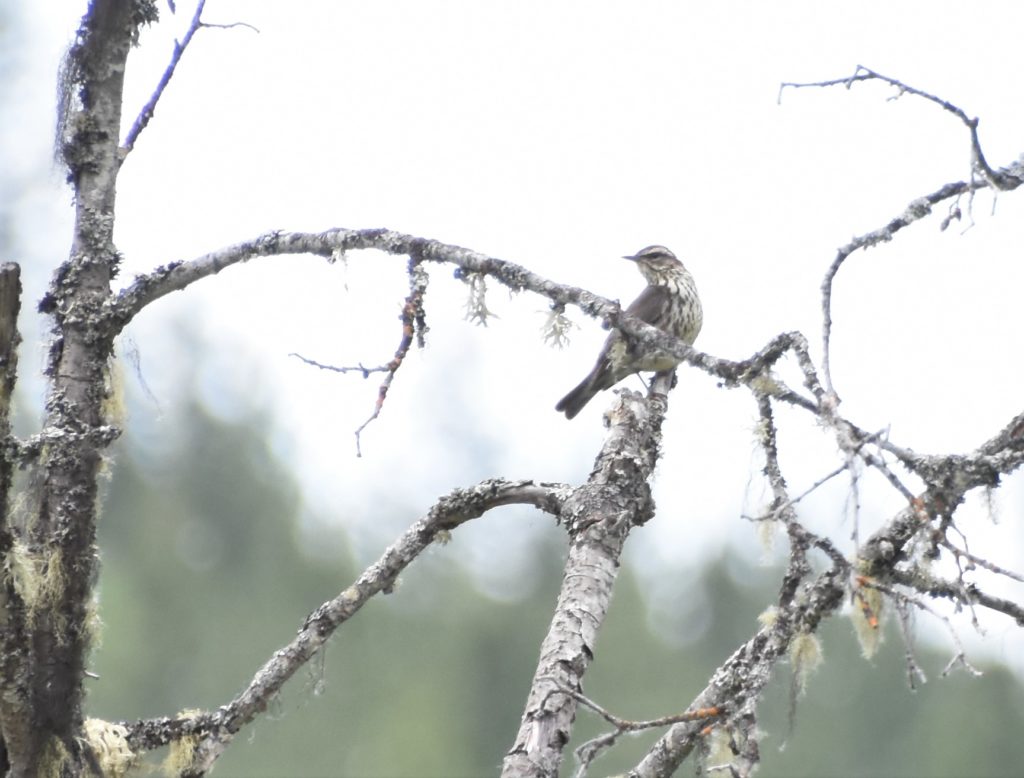
At Aladin Road not much was new, and we headed for Big Meadow Campground to pitch camp. It was disappointing there that every Alder tree in the usual camping spot had been cut down, and on the hike many trees required maneuvering over, under or around making the 2 ½ mile hike seem especially long. Also zero of either species of 3-toed woodpeckers disappointed. Singing Common loons and Wilson’s snipe calling and winnowing kept us entertained though.

This night was colder to camp out, but everyone survived, and after a hike alongside the lake without Three-toed or Black-backed Woodpeckers, we headed to our boreal high elevation stop of the trip with high hopes.

Bunchgrass Meadow was a new place for most of us on the trip. It is at high elevation, up a 10-mile road NF 1935 Sullivan lake Road near Ione, WA. Here is a link to the eBird list we had from there where you can also access the details of the eBird hotspot. Here we had big flocks of White-winged Crossbills, many Red Crossbills, at least 3 Boreal Chickadees, and a great experience of seeing a new beautiful place.
After this we stopped briefly at Noisy Creek Campground near Sullivan Lake and worked our way to the hotel of the trip, a really nice place called the Ione Riverview Motel. It is right on the Pend Oreille River, has good rooms and beds, a deck right by the river, and was great. A warm dry bed was just the thing after 2 nights camping.

The next morning we headed for maybe our most anticipated stop of the trip, Calispel Lake, where my guests on Episode #100, Scott and Sierra Downes had 90 species on a recent loop. We were hoping to do that well, and worked the area thoroughly, taking 7 ½ hours to complete the loop, taking our time, looking for every bird, and finishing with a crazy 104 species as a group. I think I saw 102 of these, missing two swift species, Black seen only by Jacob, and Vaux seen by several of us. Highlights were close up Northern Waterthrush at a lunch stop by a bridge, FOY Least Flycatcher near the Jct. of Middle-fork Road, and good numbers of Bobolinks in a couple of wet fields. A family of Say’s Phoebes, 10 species of warblers (really great for WA) and a slow paced day made for great birding.

Our last night of camping was at the Kettle Falls Campground, where we battled some high winds to set up camp before the wind died back at dusk, and outboard motors very early the next morning as fishermen took to Lake Roosevelt. Highlights here were found by Jacob after the rest of us called it a night. Lark Sparrow and another at least two Least Flycatchers were on the peninsula behind the marina, and we got back out to see them the next morning. Pygmy Nuthatches were in a snag right in camp, and we headed for home with more birding to do on Saturday.
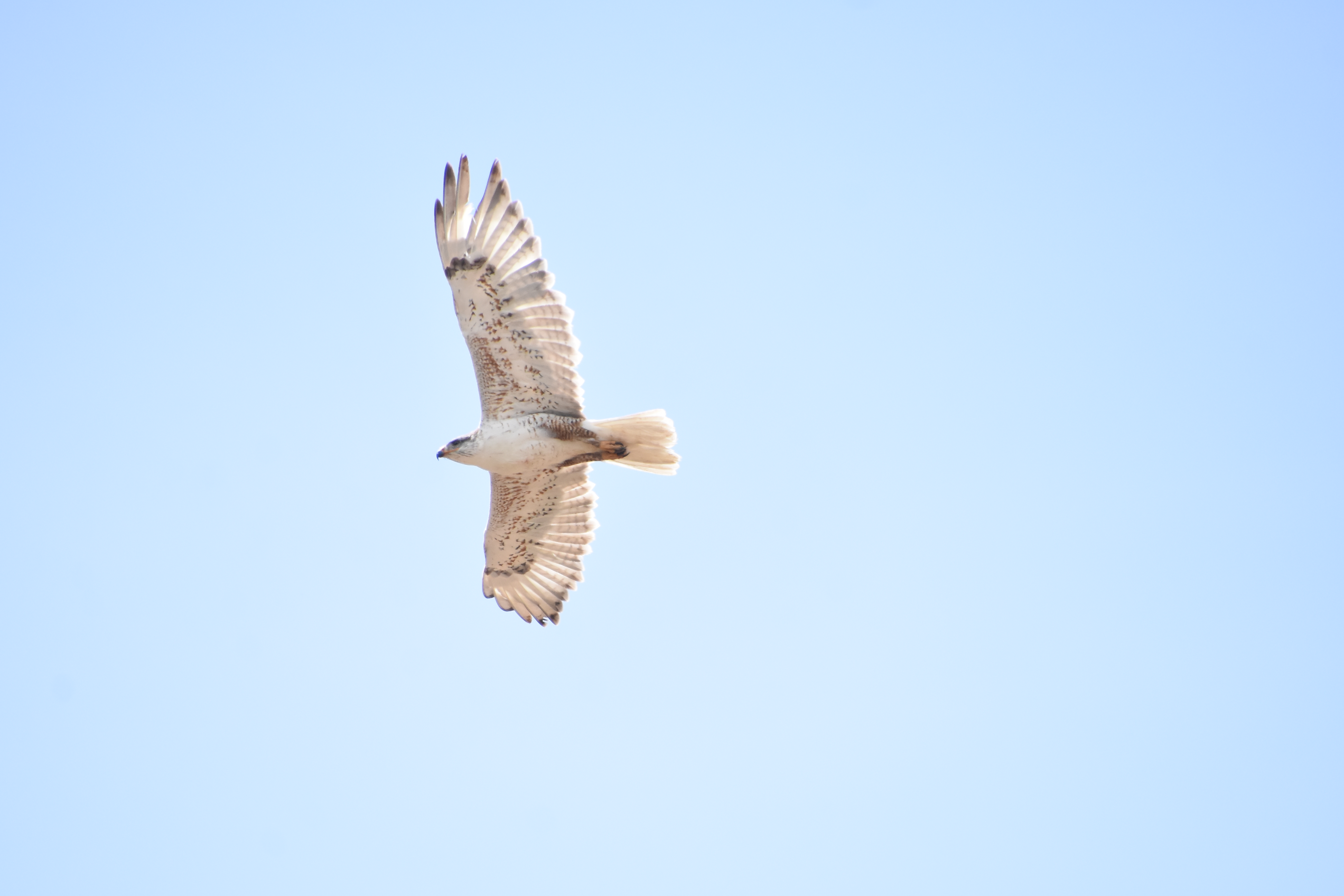
The way home was all about finding a few lifers for Jacob (and great looks at great birds for the rest of us) Ferruginous Hawks were found in two places, at mile post 82 on State Road 28 is a dilapidated windmill with a nest on the platform. Three chicks and a soaring adult Ferruginous Hawk gave great looks. Another two adults were seen later at Wilson Creek.

Road W near Krupp yielded Sagebrush Sparrow and Brewer’s Sparrows, Sage Thrasher, and Vesper Sparrow. Lunch in Krupp preceded Wilson Creek where a Barn Owl was found by Ken in the canyon wall, the pair of FEHA worked the fields, and we all headed for home satisfied and happy, our state/life/year lists enhanced and feeling really good.
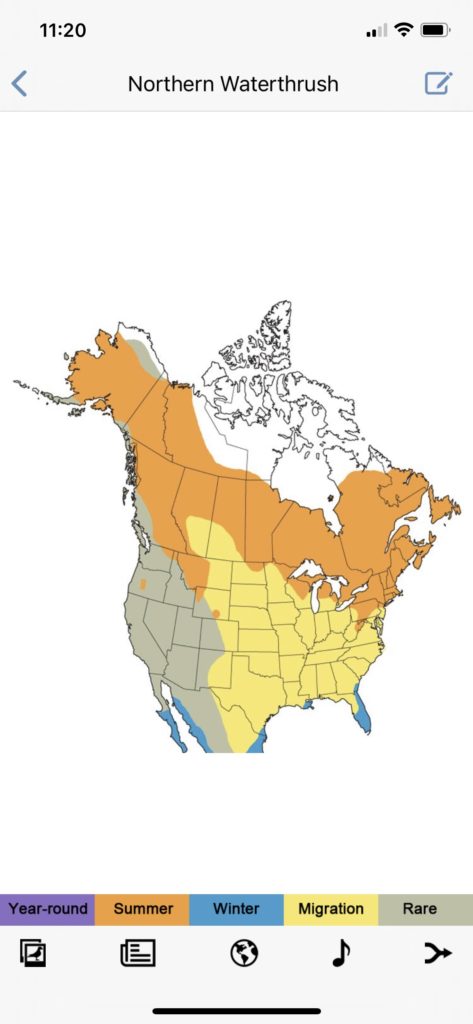
On the way home I spotted a Great Egret in a field off I-90 near Ellensburg, and we all got back to my place to head for home by about 6:30PM.
A great trip! Thanks to all participants and especially to Ken.
